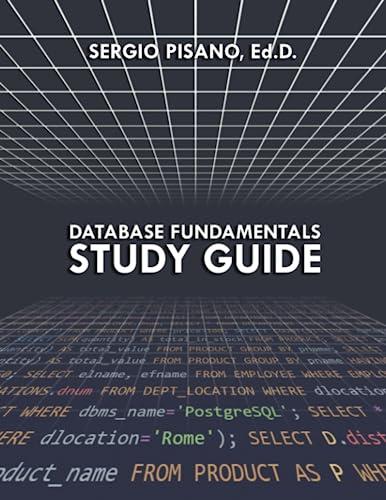
In order to make it easy to organize items in the store, Carissa has categorized the items into various product categories such as pickles, jams, sauces, preserves, flavored oils and fruit concentrates. Each item put on sale, belongs to exactly one category. Each item put on sale has a specific item ID and item name associated with it. For example item#489 is an 8oz bottle of Barbeque sauce, item #178 is an 16 oz bottle of Barbeque sauce and item #987 is a 4 oz bottle of orange marmalade etc. Each item has a recipe that is used to manufacture that item. A single recipe, can be used to produce multiple items. For example, a single mixed berry jelly recipe can produce item #456- 20Z jar of mixed berry elly or item #789-4 oz packet of mixed berry jelly Each recipe requires several raw materials, such as different kinds of produce, oils, vinegars spices, wines etc, in various proportions. An example of a raw material is white sugar that can be used in multiple recipes. Each recipe provides the quantity a raw material that needs to be used in that recipe Each of the raw materials are supplied by a preferred vendor. Each vendor may supply multiple raw materials. For example, the local farm may supply seasonal produce, condiments such as honey, cider etc. Carissa has one preferred vendor to supply each raw material It is your job to create an ERD for part of the new DBMS that relates items to their category, and to their recipes, raw materials and vendors of raw materials Each item on sale belongs to exactly one category. Each category can contain multiple items Some categories like cheeses, have been discontinued and don't have any items under it. Each item has one recipe. Using one single recipe many items can be produced. Each raw material can be used in one or more recipes. Each recipe mentions a raw material once. Even though the narrative (in paragraph 4) mentions that each recipe has several raw materials, how you model the table is important. You can think of the recipe table having an entry (record) for each recipe-raw material combination. So effectively, the recipe table will, on the whole, have muitiple entries for each raw material. Each entry in the recipe table will have only one raw material listed in it. A raw material is supplied by a preferred vendor and the same vendor may also supply other raw materials. Only preferred vendors who are currently supplying raw materials need to be isted in the database By reading through the business description above, list each of the entities that you plan to use in your ERD Write the business rules that dictate the relationship between the entities that you have listed Now, in the same way as shown in the video your professor created for Chapter 2, "clean up the business rules so that they include only each entity, the relationship and the connectivity Write the relationship bi-directionally. Complete the ERD diagram







